Table of Contents
Ever wondered how often you can do cryotherapy or how many cryo sessions are needed to really feel the difference? You’re in the right spot. We’re here to clear up the frost, answering all your burning questions. From the science behind the cold to how often you should do cryotherapy for weight loss and overall wellness, we’ve got you covered. Let’s dive into this cool adventure together, making cryotherapy a friendly, not so mysterious, part of your health routine.
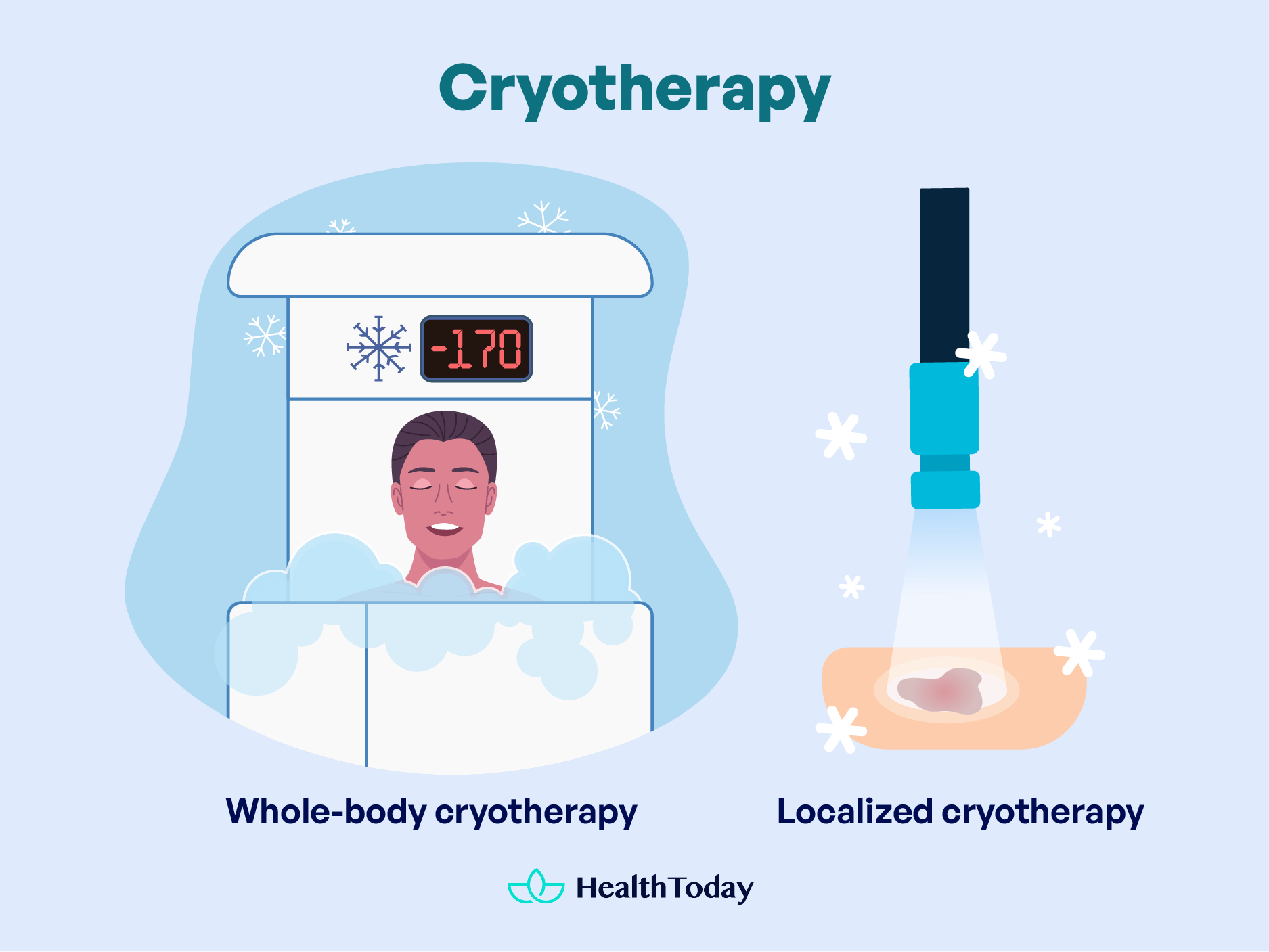
Cryotherapy: What you should know
Cryotherapy has been gaining traction beyond the realms of elite athletes and into the lives of everyday folks seeking ways to manage pain and inflammation and perhaps even catch a glimpse of the fountain of youth.
What is cryotherapy?
At its heart, cryotherapy is the practice of using extreme cold to promote healing and wellness. This therapeutic cold has been carefully calibrated to awaken the body’s most primal survival and healing mechanisms (1).
Cryotherapy comes in various forms, the most popular being whole-body cryotherapy and localized cryotherapy.
Whole-body cryotherapy involves stepping into a chamber that bathes your body in icy vapors, cooled to temperatures as low as –200 to –300 degrees Fahrenheit, for a brief period—typically between two to four minutes. It’s a bit like a sci-fi spa treatment, where you wear protective coverings for your hands, feet, and ears and embrace the cold in your most minimal attire.
Localized cryotherapy focuses on specific parts of the body, similar to an intense ice pack. This method is excellent for targeting pain, cutting down swelling, and helping injuries heal faster by applying concentrated cold directly where it’s needed.
Originally from Japan and designed to help with rheumatoid arthritis and multiple sclerosis, cryotherapy is now celebrated for much more. It’s especially popular with athletes for helping them recover after intense physical activity, offering a quick, cold break that aids in healing and relaxation.
Even though the FDA doesn’t officially approve whole-body cryotherapy for any health condition, it’s still very popular at gyms, spas, and wellness centers as a wellness treatment.
Is cryotherapy backed by science?
If you’ve been curious about cryotherapy, you’re not alone. Many wonder if this chilly wellness trend is actually supported by science. Let’s explore what research says about cryotherapy.
Treating injuries and enhancing recovery
Cryotherapy has been shown to help with muscle soreness and recovery by narrowing blood vessels, which reduces swelling and inflammation.
This is especially useful for athletes, as research indicates that whole-body cryotherapy (WBC) can effectively reduce muscle damage and improve recovery after intense physical activity (2).
However, its impact on immediate athletic performance might include temporary muscle strength reduction, suggesting a need for careful use in sports training.
Despite its benefits, there’s still some skepticism about cryotherapy. Reviews suggest that while it may help with recovery, simpler and cheaper methods like ice packs or cold baths might be just as effective (3). The scientific community is calling for more research to better understand cryotherapy’s effects compared to other treatments.
Weight loss
Cryotherapy is also famous for its effect on weight loss.
A study found that WBC could significantly reduce abdominal fat and improve metabolic markers in menopausal women, especially when combined with a low to moderate level of physical activity (4).
This points to cryotherapy’s potential as part of a holistic approach to tackling weight challenges, particularly in specific groups.
Digging deeper, another layer of intrigue is how cryotherapy might reduce fat. It’s not merely about freezing the fat away; the process could be more about how the body responds to cold. A study explored this by looking at cryotherapy’s effect on fat tissue. The findings suggest that the body’s effort to warm up after being exposed to extreme cold—through a process called cryo thermogenesis—might be the key player (5).
Instead of destroying fat cells, cryotherapy may prompt the body to burn fat more efficiently as it warms itself, a fascinating glimpse into the body’s adaptability.
However, it’s crucial to keep a grounded perspective. A study in 2016 found that cryotherapy alone didn’t lead to significant changes in body composition after 10 sessions (6). This suggests that while cryotherapy might offer a nudge, it’s not a standalone solution for weight loss.
Improving skin condition
Cryotherapy has been shown to improve skin condition significantly.
When you step into a cryotherapy chamber, the sudden drop in skin temperature kickstarts your body into repair mode.
This natural response doesn’t damage the skin; instead, it stimulates the repair of the skin’s outer layer and boosts collagen production, leading to firmer, healthier-looking skin. This process is a testament to the body’s remarkable ability to heal and rejuvenate itself under the right conditions.
Doctors often use cryotherapy to treat skin issues and early-stage cancers without needing surgery (7, 8).
This method is quick and doesn’t cause much pain, making it popular for handling conditions like precancerous skin changes, early skin cancers (like squamous cell and basal cell carcinoma), warts, skin tags, and dark spots. It’s shown to work well, which is why many dermatologists regularly use it.
Anti-aging
The conversation around cryotherapy isn’t just limited to physical. Emerging research proposes exploring its use in preventing Alzheimer’s disease by leveraging its anti-inflammatory and anti-oxidative effects (9).
The idea is to see if regular cold treatments can help prevent the onset of the disease in individuals showing early signs of cognitive decline or even in healthy individuals.
However, detailed outcomes of such studies are still awaited, indicating a future where cryotherapy might play a role in neurodegenerative disease prevention.
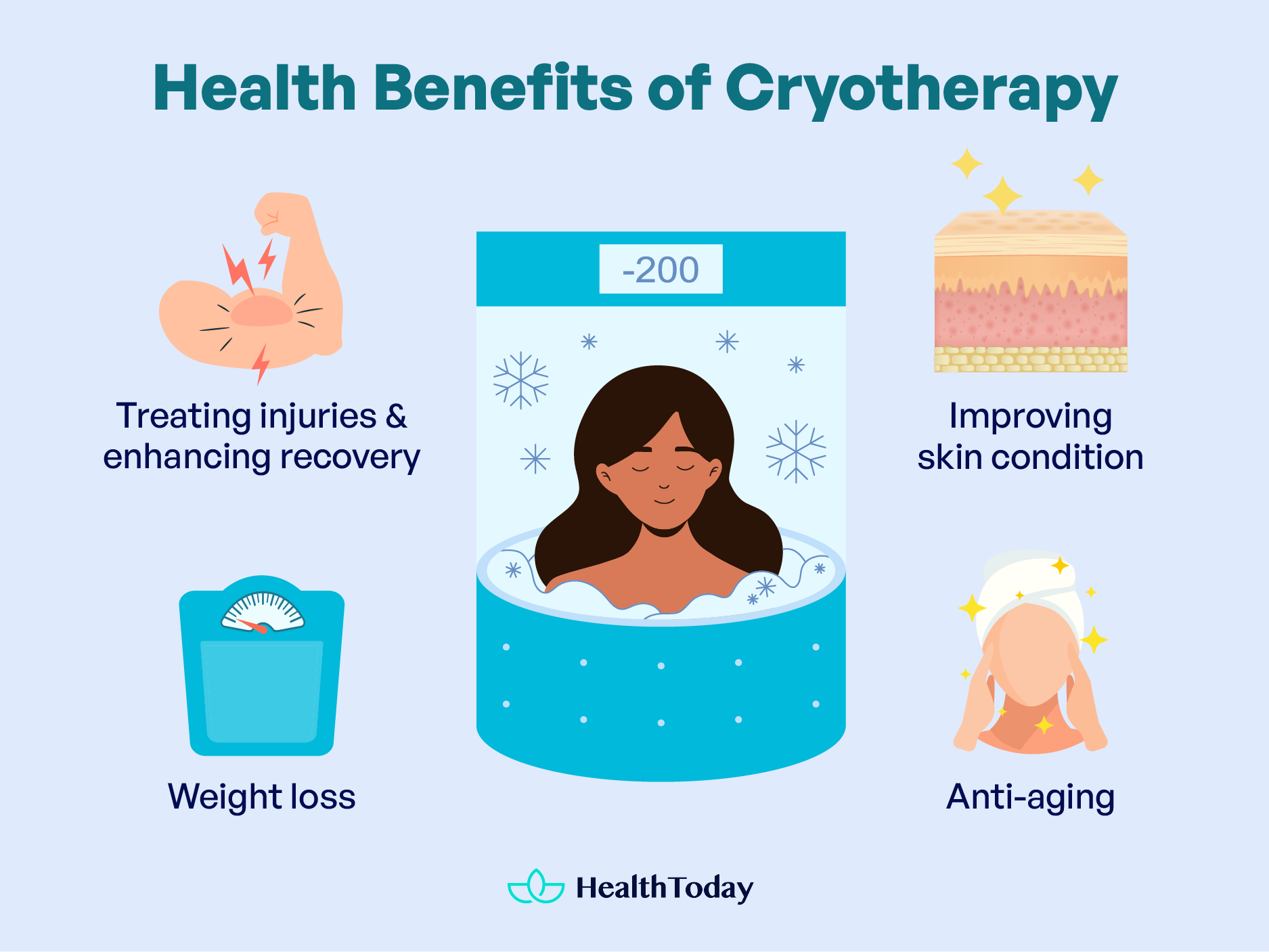
For more severe issues, like some skin cancers, cryotherapy can be a good choice, especially if regular surgery could cause scarring or isn’t possible due to the patient’s health. While it’s not always the first option for cancer, its success in treating these conditions offers hope when other treatments might not be ideal.

How often should you do cryotherapy?
Whether you’re looking to soothe sore muscles, shed a few pounds, or boost your overall wellness, understanding how often cryotherapy sessions should be on your calendar is key.
Different goals necessitate different frequencies, so your cryotherapy plan should fit your individual needs perfectly.
Whole-body cryotherapy sessions are short and sweet, lasting up to three chilly minutes. These brief but potent encounters with the cold can kickstart your recovery or boost your wellness, but the magic lies in the routine.
Localized cryotherapy focuses on specific areas, like an eagle eyeing its prey. Lasting up to three minutes, it’s perfect for targeted relief, whether it’s a rebellious knee or areas of cellulite.
Cryotherapy isn’t one-size-fits-all; how often you go depends on what you’re looking for.
- If you’re new, try 7 to 10 sessions in the first few weeks to get used to the cold and start seeing benefits.
- After that, 1 to 2 sessions weekly can help maintain the perks, like better energy and overall health.
- For athletes or anyone in heavy training, 4 to 6 times a week can help with faster recovery and less muscle pain, possibly boosting performance.
While guidelines offer a starting point, how often cryotherapy fits into your life depends on your body’s responses and your personal goals. Some may thrive with more frequent sessions, while others find fewer sessions still offer substantial benefits.
Importantly, a chat with your healthcare provider is a must before going on your cryotherapy journey. They can offer advice tailored to your health background, ensuring that your venture into the cold is both safe and beneficial.




Tips during cryotherapy sessions
Heading into a cryotherapy session can feel like a leap into a futuristic world. You might be asking yourself, “What comes next?” We’re here to clear up any questions, from what you should do before your session to the refreshing benefits you’ll experience. These tips are here to guide everyone, whether it’s your first time or you’re looking to get even more from your cryotherapy experience.
What should I expect during a cryotherapy session?
Going for your first cryotherapy session is exciting and a bit mysterious, but it’s really quite simple, and many find it invigorating. Here’s what to do and what to expect:
Before the session:
- Wear minimal clothing, like swimwear, to expose your skin to the cold. You’ll get robes, socks, slippers, and gloves for protection.
- Remove all jewelry and make sure you’re dry. Moisture or lotions can cause frostbite in the cold.
During the session:
- Whole-body sessions last about 3 to 5 minutes. If you’re doing a facial or localized treatment, it might be shorter.
- You’ll feel a strong cold rush, but it’s brief and manageable. It’s meant to lower your skin’s temperature, which helps with inflammation and muscle pain and can boost your metabolism.
After the session:
- Your skin warms up quickly after. You might see some redness or feel a tingle as your circulation kicks back in.
- If you had a skin treatment, the area might be red and blister, but it heals in a few weeks. For internal treatments, there might be some soreness for a few days.
Who should avoid cryotherapy?
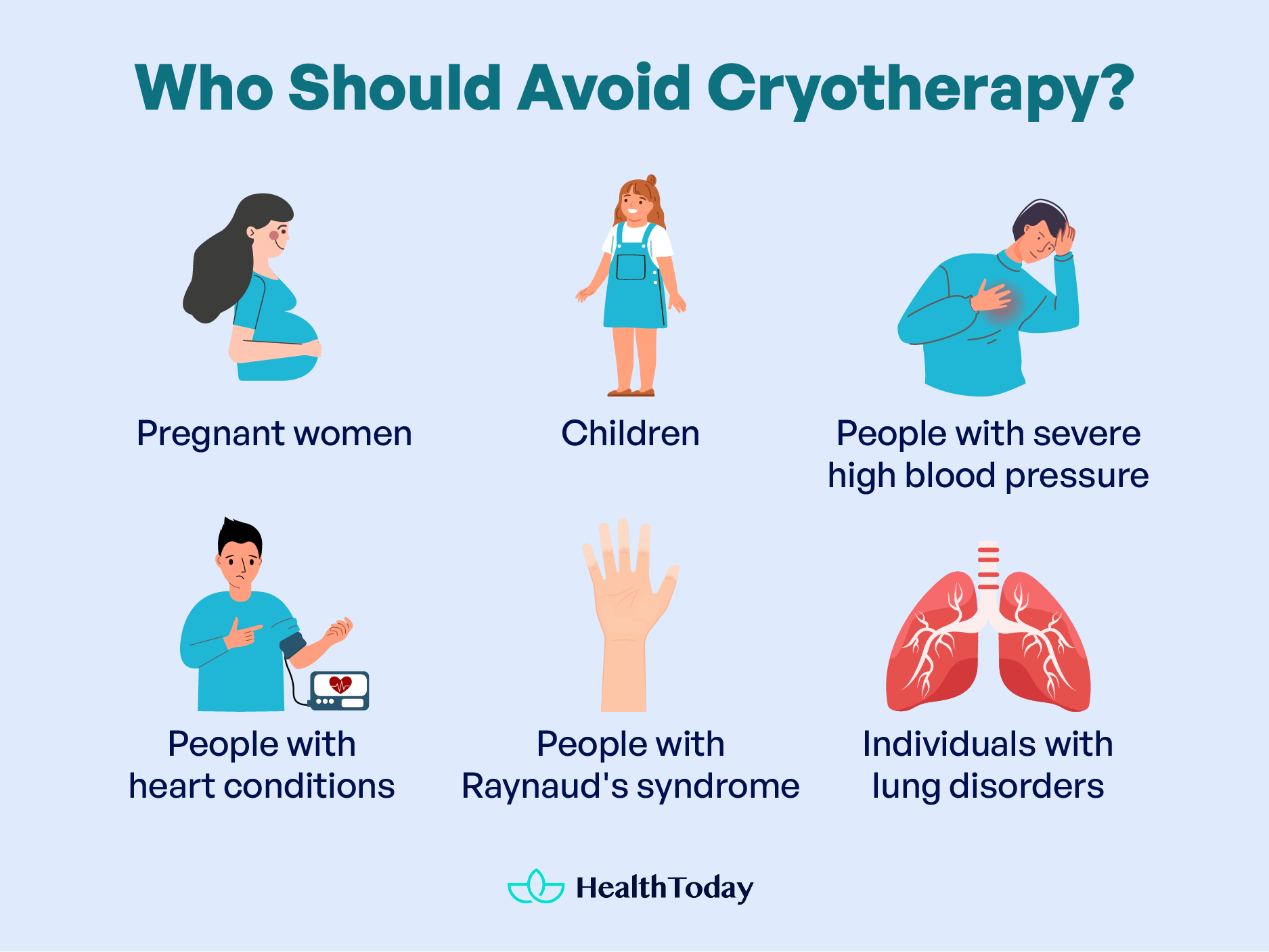

Cryotherapy is trendy for wellness and recovery, but it’s not suitable for everyone. Some people should avoid it for health reasons (7):
- Pregnant women: It’s best to skip the extreme cold because its effects on pregnancy aren’t clear.
- Children: Their bodies are still growing, and how the cold affects them isn’t well-studied.
- People with severe high blood pressure: The cold can make high blood pressure worse.
- People with heart conditions: The cold shock could be dangerous for people with heart problems.
- People with Raynaud’s syndrome: This condition makes you sensitive to cold, so cryotherapy might make things worse.
- Individuals with lung disorders: Cold air might worsen conditions like asthma or bronchitis.
It’s crucial to talk to a healthcare provider before trying cryotherapy. Your health situation is unique, and a professional can give you the best advice on whether cryotherapy is safe for you.
Side effects of cryotherapy
Cryotherapy is an exciting way to boost wellness and recovery, but like any treatment, it comes with possible side effects. Most of these are mild and go away quickly, such as:
- Numbing: Your treated area might temporarily lose sensation.
- Tingling: You could feel like parts of your body are “waking up” after being asleep.
- Nerve irritation: This is less common but can add an extra level of tingling.
- Redness: A natural response as your body warms back up.
Going over the recommended three minutes in the cryo chamber could cause more serious issues, though these are rare (10):
- Skin burns can happen but are usually preventable with proper care.
- Bleeding or cramping may occur after certain treatments.
- Nerve damage could lead to a loss of feeling, emphasizing the need for careful use.
- Swelling, scarring, and skin infection: It is important to follow aftercare advice to avoid these.
While these side effects can sound concerning, they’re not common, especially if you use a trusted provider and stick to safety advice. Cryotherapy is generally safe and beneficial for many, helping with recovery, pain management, and mood improvement.
The cost of cryotherapy sessions, ranging from $20 to $80, is another factor to consider since it’s not usually covered by insurance in the U.S. Balancing the benefits with the expense is important to determine if cryotherapy is worth it for you.




How often should I do cryotherapy for weight loss?
To shed pounds with a chill, aim for a rhythm of 3 to 5 sessions a week to complement a balanced diet and regular exercise. It’s not a magic freezer that melts away pounds on its own, but it can give your metabolism a nudge in the cold direction. Be sure to also manage stress and get quality sleep!
How many cryo sessions are needed to see results?
For general wellness and recovery, you might notice improvements after just a few sessions. However, for more specific goals, like significant pain reduction or enhanced athletic performance, it could take up to 10 sessions. It is important to note that everyone’s biochemical makeup and needs are different.
How many cryotherapy sessions does it take to see results?
Much like the above, it varies based on what you’re after. If you’re looking to boost your overall energy or mood, a few sessions might do the trick. For more tangible physical benefits, like reduced inflammation or recovery from sports injuries, expect to commit to a series of treatments.
What happens if you overuse cryotherapy?
Overdoing cryotherapy can lead to skin irritation, numbness, or even frostbite if you really push the limits. Stick to the golden rule of 3 minutes max per session to keep your cryo experiences in the “refreshing” rather than “regrettable” category.
Does skin go back to normal after cryotherapy?
After a cryotherapy session, your skin might throw a bit of a tantrum with redness or tingling, but it typically bounces back to its normal state within a few minutes to hours. A healing period is involved for treatments targeting specific skin issues, but with proper care, your skin should return to its former glory, often looking even better than before.
Summary
We’ve taken a deep dive into everything cryotherapy, from how often you can do cryotherapy to its benefits and beyond. Whether you’re aiming for weight loss or general health, now you know how often you should do cryotherapy and how many cryo sessions are needed. We’ve covered how to prepare, what to expect, who might want to pass, and potential side effects. Now, armed with knowledge and a clear understanding, you’re ready to see if cryotherapy fits into your health journey, making it both safe and beneficial for you.





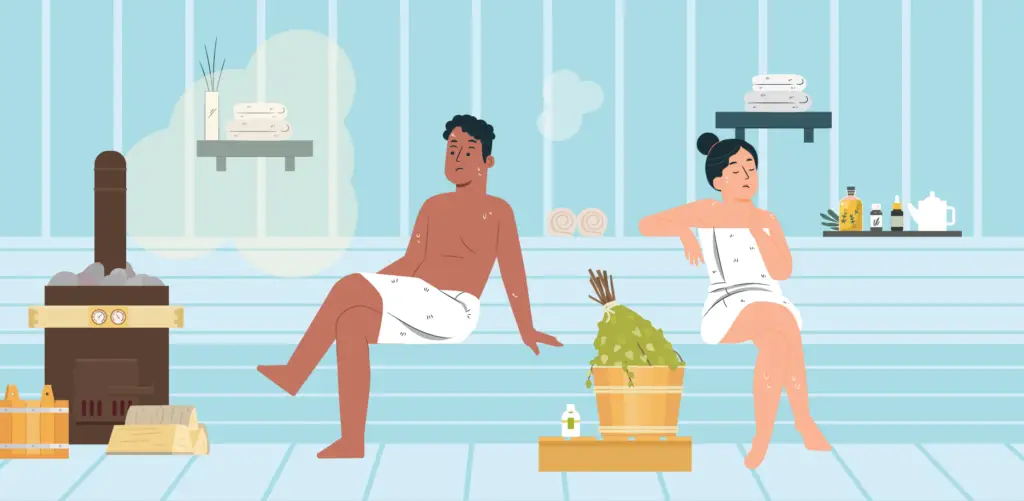







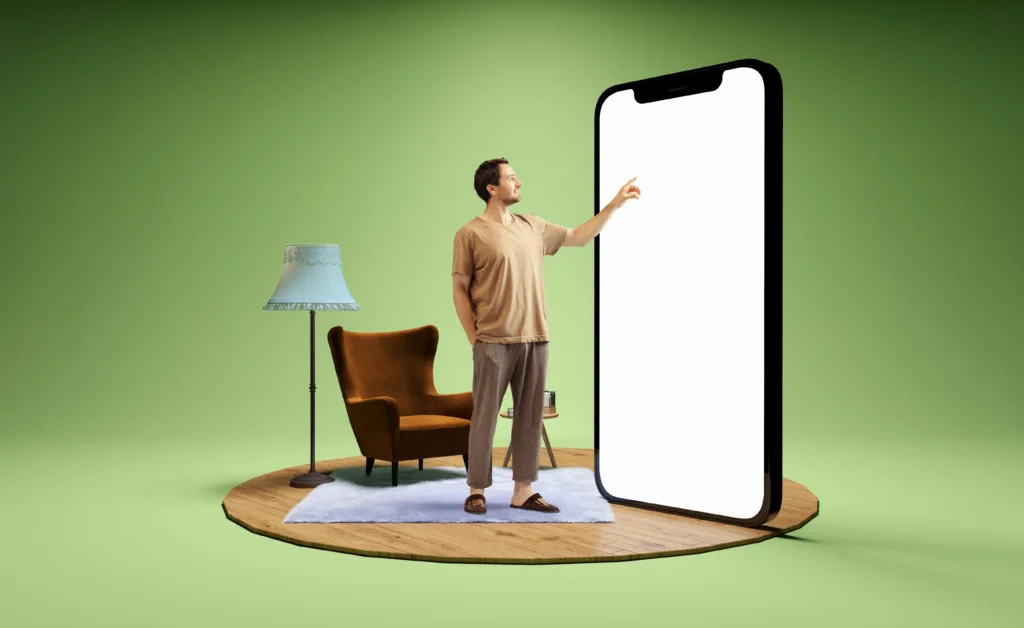



Comments
0